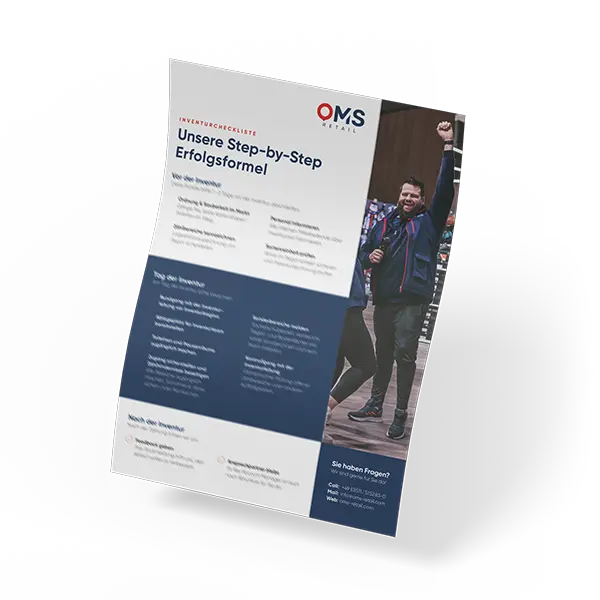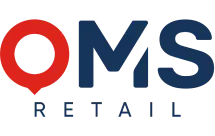Practical inventory tips for companies
An inventory is more than just a legal obligation - it forms the basis for economic decisions and reliable inventory data. Those who are well prepared save time, reduce errors and ensure transparency in the company.
The following tips show you how to organize your stocktaking efficiently step by step - and when it pays to get support from an external service provider.


How an inventory strengthens trust
A inventory not only serves to fulfill legal requirements, but is also a central instrument of business management. It provides the factual basis on which companies can make well-founded decisions - from financial planning to the procurement of goods. Costs, liquidity and income can only be realistically assessed if the actual stock levels are known.
Regular stocktaking also helps to ensure data quality within the company. It ensures transparent processes, creates confidence in the figures and thus forms the basis for reliable evaluations in controlling and strategic planning.
Importance of an error-free inventory
An error-free inventory is crucial in order to correctly value inventories and realistically reflect the economic situation. Even small deviations between target and actual stock levels can lead to incorrect balance sheet values, faulty decisions and financial risks. Only precise data enables reliable inventory management, cost control and reliable planning.
At the same time, careful stocktaking prevents economic disadvantages. It helps to avoid shortages and excess stock, secure liquidity and comply with legal requirements. A consistently carried out and documented inventory protects against losses, improves data quality and promotes long-term transparency and profitability.

Professional inventory service providers offer structured processes, modern technology and experienced teams - for reliable results without additional work in day-to-day business.
Practical tips for efficient stocktaking
A successful inventory depends on good preparation, clear processes and appropriate support. The following six tips show how to reduce effort, avoid errors and ensure reliable results:

How to prepare your inventory successfully
Reliable stocktaking requires well thought-out preparation. Clear responsibilities, suitable technical equipment and an orderly warehouse structure make a significant contribution to reducing errors and ensuring correct results. The following tips will help you prepare a professional inventory:
Planning and responsibilities:
Set a suitable inventory date and a realistic time frame with a buffer at an early stage. Define clear responsibilities for counting, checking and documentation and document these in a binding manner to rule out any gaps in responsibility.
Technical and organizational preparation:
Check all devices used, such as scanners, tablets or scales, provide replacement materials and ensure functioning digital interfaces to merchandise management. Organizing these tools with foresight reduces technical failures and prevents delays.
Warehouse and process organization:
Organize storage areas, assign clear labels and ensure that goods locations are easily accessible and clearly arranged. Define counting methods and control mechanisms - such as spot checks - in advance so that the count is reliable and traceable.
Communication and test run:
Inform all employees involved in good time about the process, responsibilities and special features. If possible, carry out a small test run to check the practicality of processes and technology and identify any weaknesses at an early stage.
Forward-looking preparation reduces time loss, prevents double counting and increases the quality of the inventory results. This creates a reliable basis for the subsequent valuation and the annual financial statements.

Clear structures as the basis for a successful inventory
Structure is a key element for the quality and traceability of an inventory. It ensures that stocks are systematically recorded, responsibilities are clearly assigned and results can be verified at a later date. A clear order within the inventory framework has a direct impact on transparency, consistency and verifiability.
Logical segmentation of the inventory area:
A structured subdivision of the storage or sales areas into clearly defined areas - for example according to product groups, storage zones or areas of responsibility - creates clarity and enables orderly recording.
Clear assignment of tasks within the structure:
Based on the area structure, roles are assigned to a defined area of responsibility along the inventory sections. This strengthens the traceability of the process and facilitates subsequent queries or checks.
Uniform recording logic within the defined structure:
If the counting sequence, recording principles and evaluation guidelines are applied uniformly within the structure, comparable and consistent results are produced that can be checked internally and verified externally.
Documentation framework as a structural element:
A traceable documentation structure - for example, through fixed data fields, release levels or defined transfer points - ensures that the stocktaking process is not only orderly, but can also be fully reconstructed retrospectively.
Structure encompasses more than just order: it creates a binding framework in which responsibilities, areas and inspection steps are clearly assigned. This makes the inventory process transparent and comprehensible.
Such a structure supports consistent implementation, makes it easier to check the results and contributes to auditability and verifiability in terms of proper accounting.

Which inventory type suits your company?
The selected inventory type influences both the effort and the accuracy of the results. It determines how inventories are recorded, evaluated and reconciled and the extent to which ongoing operations are affected. The right choice of procedure ensures a transparent, legally compliant process and can be efficiently integrated into existing processes.
Key date inventory:
With the classic key date inventory, all stocks are recorded on a fixed key date. This method offers a high degree of accuracy and is particularly suitable for companies that carry out a complete inventory once a year. Careful planning is important to avoid business interruptions.
Permanent inventory:
Here, data is recorded continuously throughout the year. Each item is documented when goods are received and dispatched. This procedure reduces the workload on the balance sheet date and enables continuous stock control - but requires accurate stock accounting and trained employees.
Misplaced inventory:
The postponed inventory allows an inventory to be taken in a period of up to three months before or two months after the balance sheet date. The prerequisite is that the changes between the inventory date and the balance sheet date are mathematically traceable. It offers flexibility in terms of time, but requires precise documentation.
Inventory sampling:
For large quantities of goods, inventory sampling can be useful. Only selected stocks are counted and the total quantity is calculated. This procedure saves time, but requires a statistically recognized method and stable inventory data.
Documentation and traceability:
Designate fixed contact persons for queries, corrections or technical problems. A clear communication structure ensures that information reaches the right people quickly during the inventory.
A careful choice of inventory type creates the basis for legally compliant and reliable results. It makes it possible to optimally coordinate effort and accuracy and to efficiently integrate the process into the operating procedure.
A clearly defined procedure also ensures transparency, comparability and confidence in the inventories determined - a key factor for the quality of the entire inventory.

How modern systems optimize the inventory process
Modern technology plays a central role in the efficient implementation of stocktaking. Digital systems, mobile recording devices and automated interfaces ensure that inventories can be recorded faster, more accurately and with less manpower. The use of suitable technology makes the entire process more transparent, legally compliant and easier to integrate into existing processes:
Mobile data acquisition:
Scanners, tablets or smartphones allow the metering results to be entered directly on site. This eliminates manual transmissions and significantly reduces sources of error. Data can also be transferred to the merchandise management system in real time, allowing an immediate plausibility check.
Barcode and RFID technology:
The use of barcodes or RFID tags significantly speeds up the identification of items. While barcodes are captured via simple scanning processes, RFID systems enable the automatic recognition of entire pallets or shelves without visual contact. This saves time and increases accuracy, especially in large warehouse structures.
Digital counting lists and cloud systems:
Electronic tally sheets are increasingly replacing paper forms. They enable structured data entry and central storage in the cloud. This means that all information can be accessed at any time, processed jointly and archived in an audit-proof manner.
Integration into ERP and merchandise management systems:
A technical connection to existing ERP systems makes it easier to compare target and actual stock levels. Automated interfaces take care of data transfer, reduce administrative effort and ensure that all stocks are consistent and up-to-date.
Error control and tracking:
Digital systems offer the possibility of automatically recognizing and marking deviations. Incorrect entries can be quickly checked and corrected using control functions. This improves the quality of the results in the long term.
Modern technical equipment not only speeds up the recording process, but also improves the accuracy and traceability of the inventory. It creates the conditions for efficient processes and provides a reliable database for all subsequent analyses.
The targeted use of digital solutions makes stocktaking easier to plan, safer and more transparent - a clear advantage for any company that relies on precise and up-to-date inventory data.

Targeted training measures for an error-free inventory
Well-trained employees make a decisive contribution to the accuracy of an inventory. While organizational guidelines set the framework, training ensures that these guidelines are correctly understood, uniformly applied and reliably implemented. The aim is to consolidate the handling of processes and recording equipment, to strengthen the understanding of interrelationships and to ensure the quality of results in the long term.
Understanding of the aim and importance of stocktaking:
At the beginning, the role of the inventory in the overall company valuation process should be explained. Those who are aware of the influence of the counting results on the valuation and balance sheet generally work more carefully and consciously.
Safe handling of recording equipment:
The use of scanners, digital counting tools or data entry templates requires practical safety. Short, application-oriented training courses help to avoid operating errors and ensure consistent data capture.
Uniform application of counting and documentation rules:
Training courses should explain how items are correctly recorded and how special features - such as damaged goods or open containers - are handled consistently. This reduces misinterpretations and supports comparable results.
Strengthen quality awareness and understanding of control:
A basic understanding of plausibility checks, dealing with deviations and the importance of documented queries contributes to the reliability of results and facilitates subsequent audits.
Targeted training measures not only promote the technical safety of employees, but also strengthen their awareness of their own contribution to the overall process. Those who understand the importance of their work within the stocktaking process are generally more attentive and structured in their approach.
This creates a shared understanding of responsibility, which supports the consistency and reliability of the inventory results and facilitates their traceability for subsequent audits.

Careful follow-up as the basis for precise results
Once the census has been completed, the collected data is systematically processed and evaluated. The aim is to analyze deviations in a comprehensible manner, consolidate results and create a sound basis for inventory valuation and the annual financial statements.
Data comparison and difference analysis:
The actual stock levels recorded are compared with the target data from merchandise management or ERP systems. Conspicuous deviations are flagged and checked for relevance. If necessary, a targeted recount is carried out to validate the data.
Error correction and root cause analysis:
Any differences identified are analyzed with regard to possible causes - such as transmission errors, incorrect allocations or multiple entries. The resulting correction ensures that the final values are plausible, consistent and auditable.
Documentation and audit-proof archiving:
Results, corrections and inspection notes are fully documented and stored in an audit-proof manner in accordance with the requirements for traceability and auditability. This creates transparency and meets the requirements of internal and external audits.
Evaluation and derivation of optimization potentials:
Meaningful inventory reports are created from the cleansed data. These not only serve to evaluate the inventory, but also provide insights into process weaknesses, structural anomalies or training requirements and thus form a basis for continuous improvements.
Consistent follow-up strengthens the reliability of inventory values and forms the basis for well-founded decisions in inventory management, procurement and process optimization.
Inventory checklist for companies - now available as PDF
Do you want to ensure that your stocktaking complies with legal requirements and is carried out efficiently at the same time? In our latest inventory checklist, you will find out which steps are necessary for a complete and legally compliant inventory. We show you how to avoid typical mistakes, which deadlines and documentation obligations apply and how structured processes lead to precise results.
Benefit from clear recommendations for action and keep your stocktaking processes under control in the long term.

Your inventory in the best hands - with OMS Retail
An inventory is more than just a legal obligation. It provides a clear view of the actual stock levels and forms the basis for reliable business decisions. Carefully planned and carried out, it creates transparency, uncovers discrepancies and provides a realistic picture of the company's situation.
OMS Retail supports you in carrying out your stocktaking. With over 20 years of experience in stocktaking, we support companies from various sectors in Germany and Europe - from preparation to final evaluation.
The teams work with modern scanning technology and established processes to record stock efficiently and comprehensibly. If required, the work can also be carried out outside regular business hours. Thanks to the structured full-service approach, planning, implementation and follow-up are coordinated and implemented from a single source.
This produces a transparent, reliable inventory result that relieves the burden on internal processes and provides a reliable basis for future decisions.
Do not hesitate to contact us
Book your full-service inventory now and gain a reliable partner who will take the pressure off you in the long term. Give us a call or use our contact form for a personalized offer and you and your store network will benefit from our full service for a fast and efficient inventory in the future.

Your direct contact to us!
E-Mail: info@oms-retail.com
Phone: +49 (0)511 / 515 283-0
